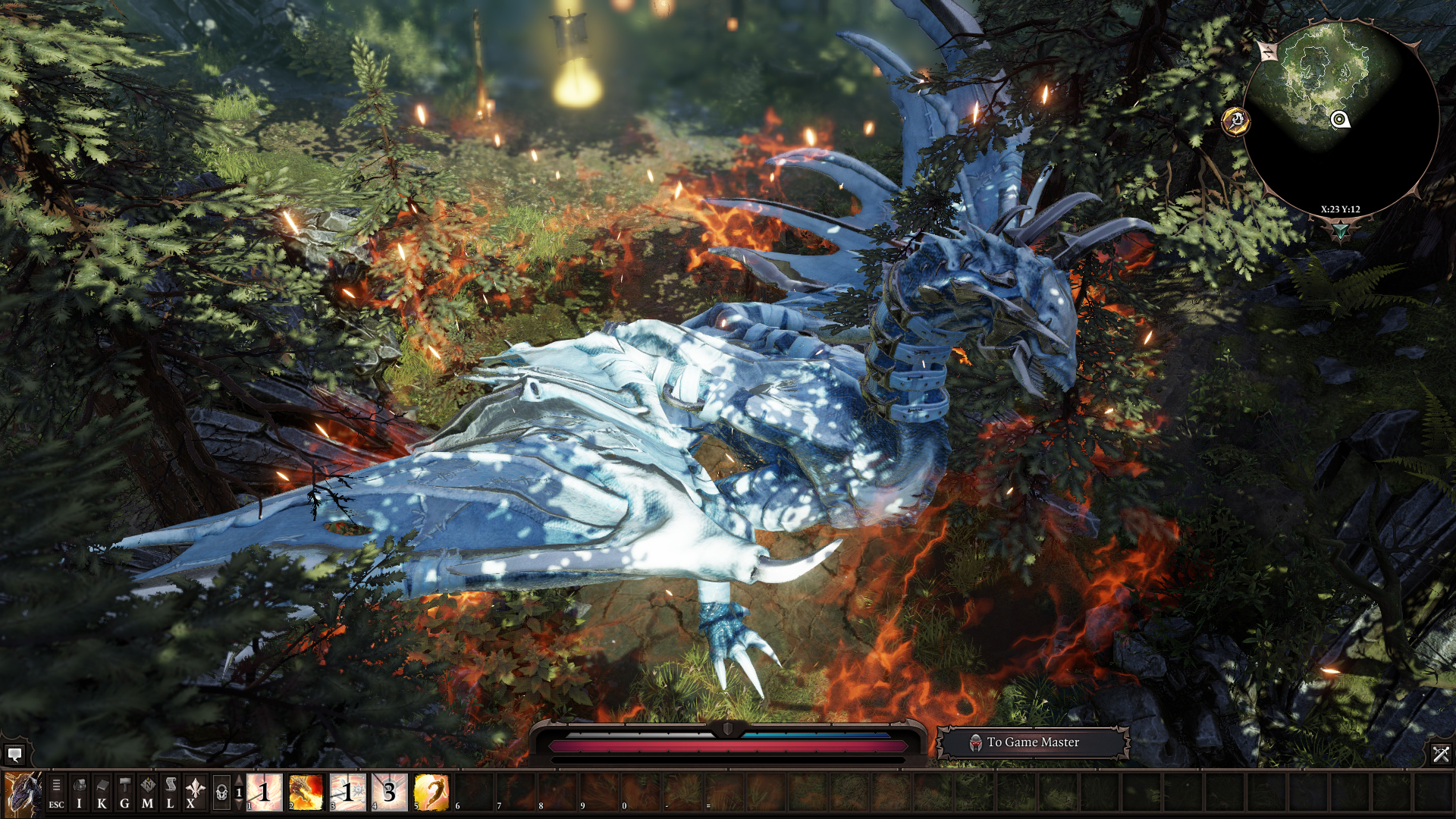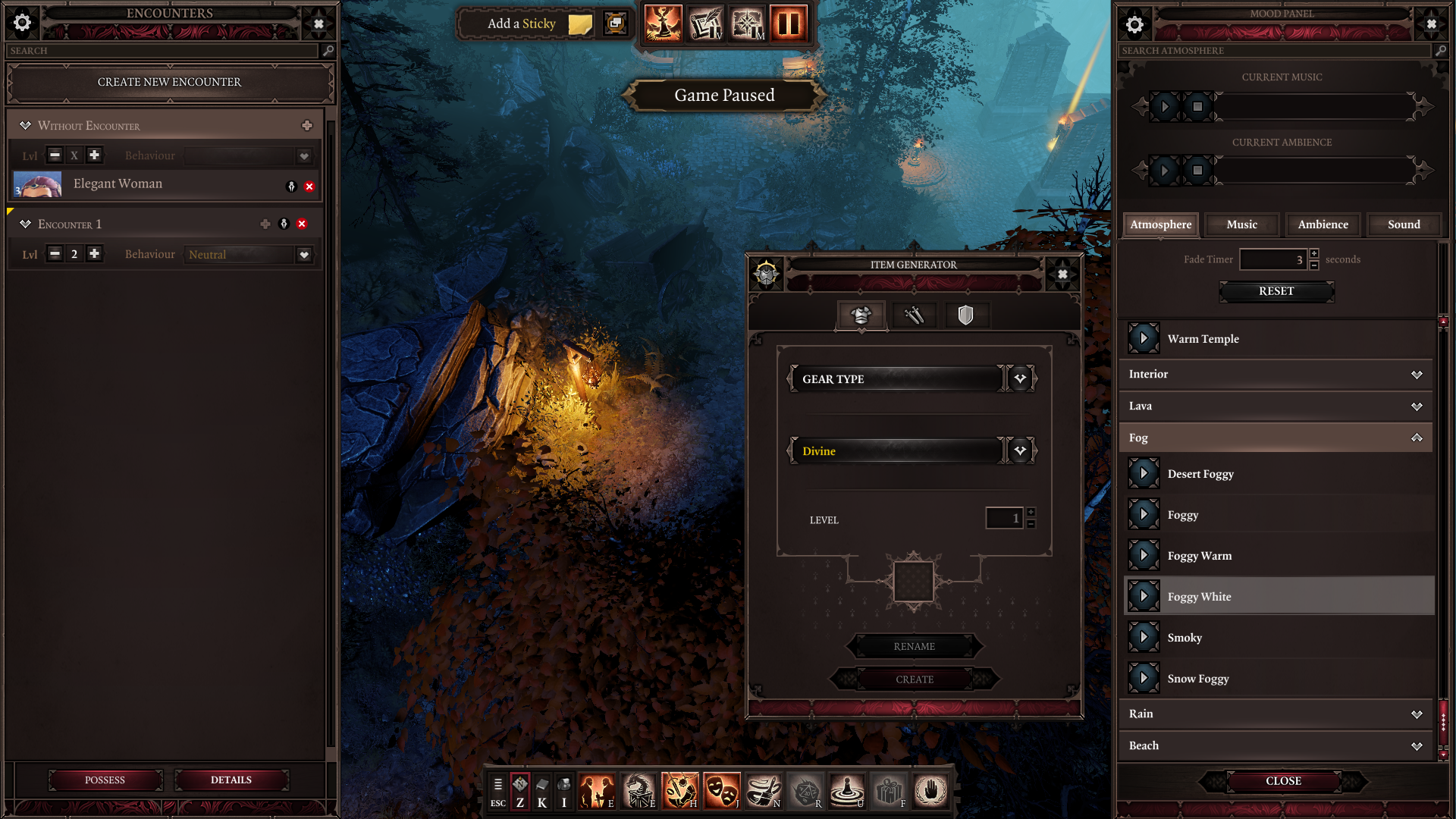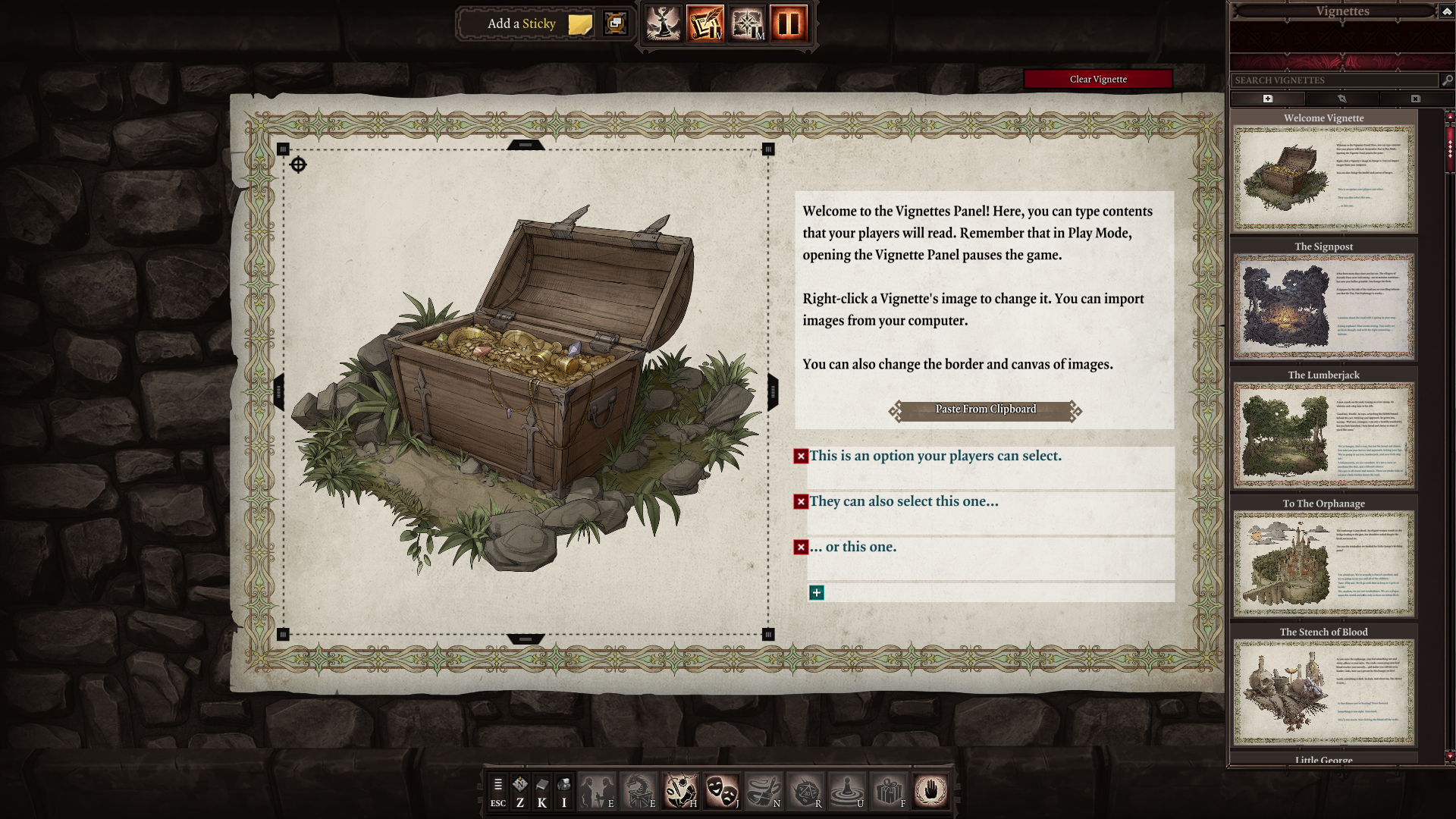Divinity: Original Sin 2 is the best tabletop RPG that doesn’t require a table
The Game Master mode shouldn't be overlooked.

Tabletop roleplaying is one of my favourite things that I almost never get to do. I struggle to even find the time to play through a single-player RPG outside of work, so arranging an evening of dice rolling and goblin slaying with equally busy people can be a bit of a nightmare. Divinity: Original Sin 2, then, is a blessing. With its co-op and Game Master modes, it’s not just a convenient alternative to a tabletop RPG, it’s occasionally an improvement.
Co-op is straightforward, on the surface. You can play the entirety of the campaign with up to three other people and the rules are exactly the same as they are in single-player. But that means there are hardly any rules at all. Chaos and player agency reigns, with each individual choosing how to engage with the game. As I said in my review, Divinity: Original Sin 2 is the type of Game Master that lets you attempt almost anything.
That’s why one player might be buying new skill books, while the rest of their party are either following leads or getting into fights. The game sets up all these crises, events and quests, but it’s up to you how you you approach them, if you don’t ignore them entirely. You don’t need to follow everyone else. And you might even end up competing, since you’re all heading towards the same objective.

We both died. Twice. But I still felt really good about my decision.
It’s when you’re reacting to what your fellow adventurers have done where co-op really feels like a tabletop romp, though. When I first arrived in the initial hub, Fort Joy, my co-op pal and I became embroiled in a confrontation between some thugs and their latest victim. My partner in adventuring decided to side with the thugs, and being right next to him, I ended up being dragged into a fight where I was clearly on the wrong side. Morally speaking. So I started attacking the thugs. And even my partner.
Things didn’t end up going my way, lamentably, but nothing stopped me from trying to save the situation. Later, I got my revenge by trapping us in a fight with a pack of bloodthirsty, teleporting crocodiles. We both died. Twice. But I still felt really good about my decision.
Ultimately, the thing that holds co-op together and makes it a great tabletop facsimile is Larian’s design philosophy. Larian made the game, but it’s the players who are in charge. If you think you can do something, you probably can, and with four players all trying to see how far they can push things, the game becomes a beautiful mess.

Create a campaign
It’s the Game Master mode, of course, that is the most obvious nod to tabletop roleplaying. Contained within it are myriad tools, from character creators to customisable maps, that allow you to craft your very own campaigns, designed to be run by a GM. These campaigns are made up of small areas—houses, marketplaces, dungeons—connected by a map and custom vignettes that can be filled with story beats and choices for players, complete with assets and art that’s been imported, drawn from Original Sin 2, or created using the accompanying mod tools.
Keep up to date with the most important stories and the best deals, as picked by the PC Gamer team.
One of the big appeals of the mode is that you don’t need any programming skills or the ability to create scripts. If you can come up with or simply run a tabletop campaign, then you’ve probably got everything you need already: imagination and creativity. The tools that let you design areas, set up encounters and create quests are largely intuitive. Larian has provided some area templates that you can customise if making your own seems too daunting, and there’s a lot you can do with them before you even start running a game.

The mode embraces the idea that GMs aren’t adversaries; they’re there to spin an adventure.
Once you do start the game, more changes can be introduced on the fly. This might be obvious things like possessing an NPC or activating a battle, but there are more than a few subtle ways to bring an area to life. The atmosphere options are especially handy, letting you change the weather, music and sound effects to match the tone you want to convey. And since players will inevitably do things you’d never considered, it’s helpful to have such a robust toolkit to react with.
Original Sin 2’s combat system is one of the best in the genre, but it’s elaborate and, in my experience, very hard to balance when you’re making your own encounters. That’s not a problem in a game with a GM. If the whole map is covered in fire and it’s stopped being fun for the players, just add some rain to help them out. Alternatively, you could always add a narrative twist—maybe one of the enemies is a turncoat, perhaps another hero hears the sound of battle and jumps in to help. The mode embraces the idea that GMs aren’t adversaries; they’re there to spin an adventure.
This seems like a great place to start for players who are entirely new to tabletop games. It can be easy to forget that, even though games like D&D have been simplified over the years, there’s still a bit of a knowledge barrier. But in Original Sin 2, there are no complicated rules to remember and no need to refer to a manual. Nothing gets in the way of playing the game, and what’s left are the best parts.

Fraser is the UK online editor and has actually met The Internet in person. With over a decade of experience, he's been around the block a few times, serving as a freelancer, news editor and prolific reviewer. Strategy games have been a 30-year-long obsession, from tiny RTSs to sprawling political sims, and he never turns down the chance to rave about Total War or Crusader Kings. He's also been known to set up shop in the latest MMO and likes to wind down with an endlessly deep, systemic RPG. These days, when he's not editing, he can usually be found writing features that are 1,000 words too long or talking about his dog.

